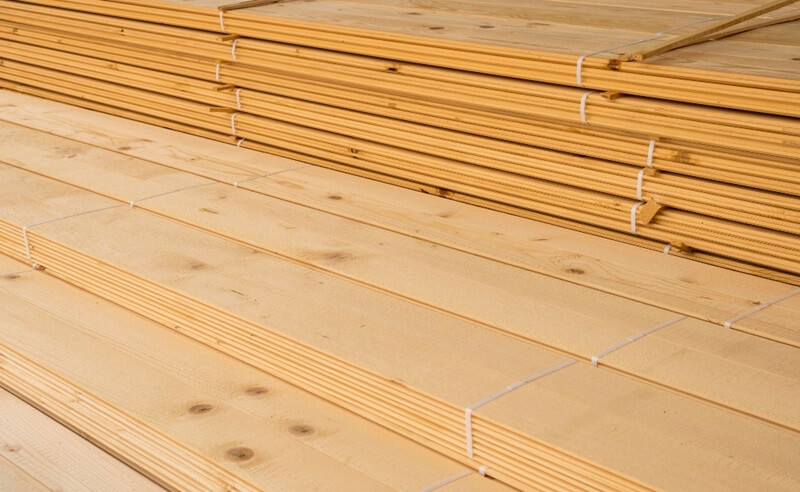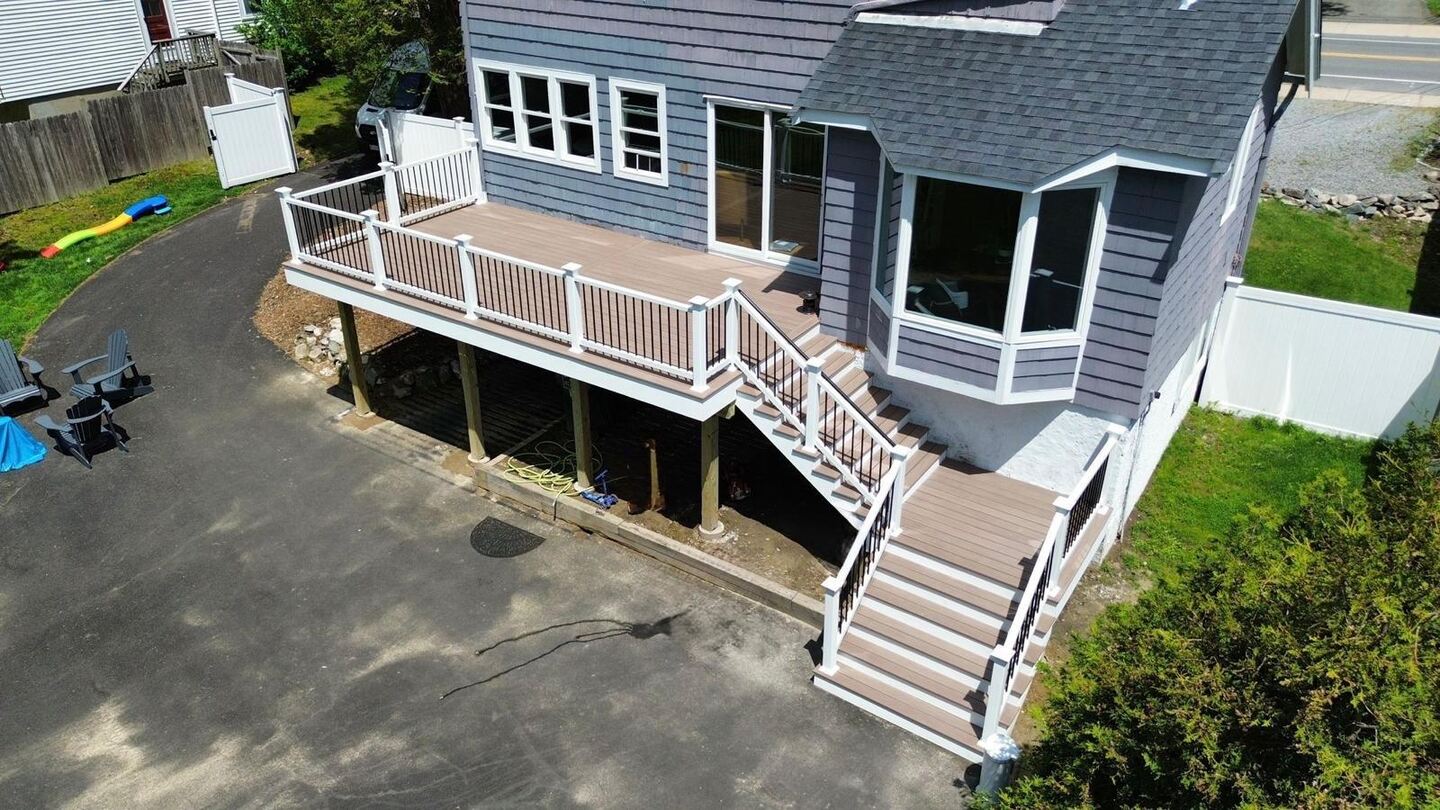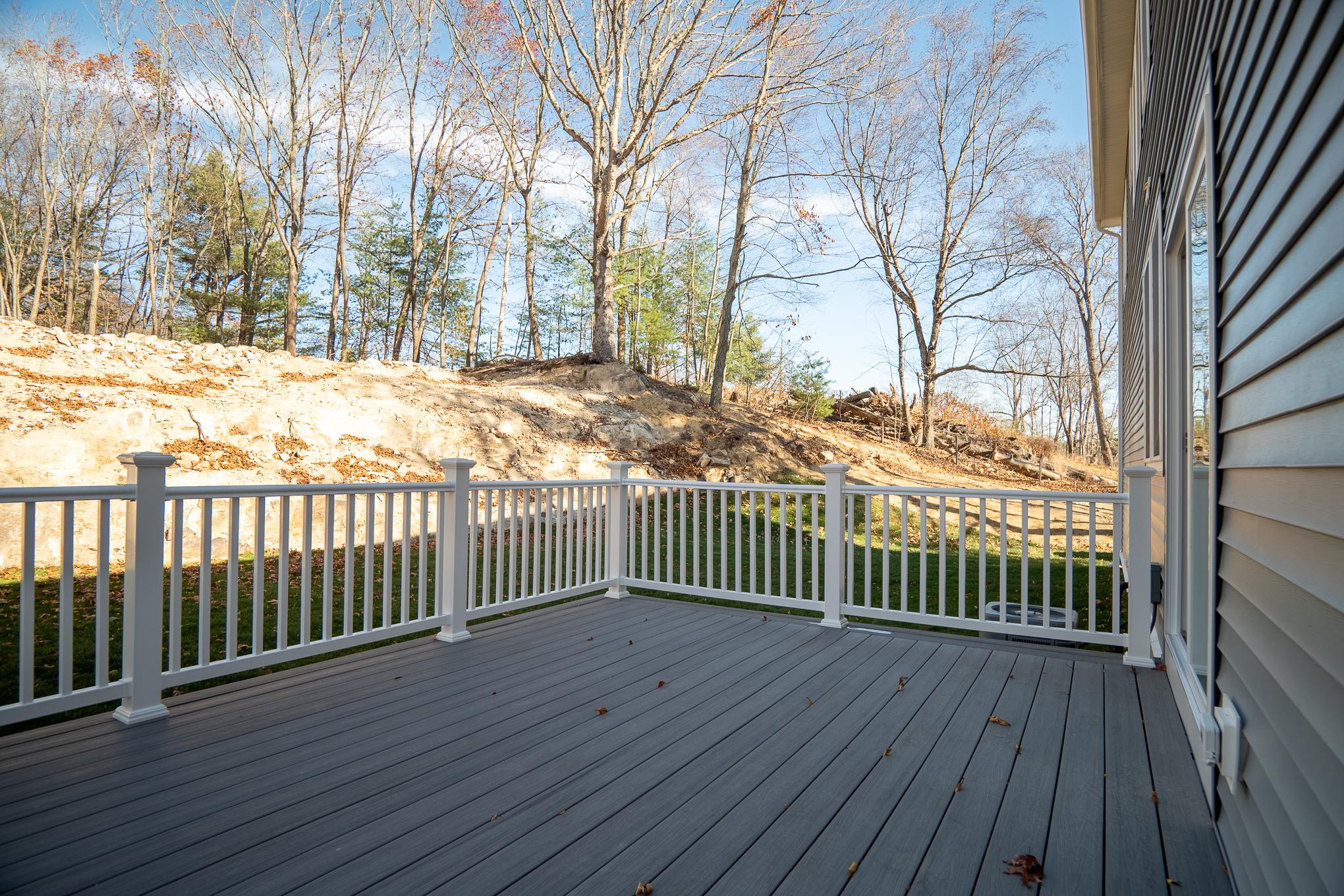Composite decking has quickly become a favored choice for modern construction, offering a versatile and durable alternative to traditional wood. As homeowners and builders seek materials that combine aesthetic appeal with long-lasting performance, composite decking stands out for its low maintenance and eco-friendly attributes. This guest post will explore what composite decking is, delve into its benefits and drawbacks, and provide insights into why it’s gaining popularity in today’s architectural projects.
What is Composite Decking?

Composite decking is a type of decking material that is made from a combination of wood fibers and plastic. It is a popular choice for outdoor decks because it is durable, low-maintenance, and environmentally friendly.
Composite decking is designed to look and feel like real wood, but it is more resistant to rot, decay, and insect damage. It is also less likely to warp, crack, or splinter, making it a great option for homeowners who want a long-lasting and attractive deck.
One of the main advantages of composite decking is that it requires very little maintenance. Unlike wood decking, which needs to be stained, sealed, and sanded regularly, composite decking can simply be cleaned with soap and water. This makes it a great choice for busy homeowners who want a beautiful deck without the hassle of constant upkeep.
Another benefit of composite decking is that it is environmentally friendly. Because it is made from recycled materials, composite decking helps to reduce the demand for new lumber and plastic, which can help to conserve natural resources and reduce waste.
Composite decking is also available in a wide range of colors and styles, so homeowners can choose a design that complements their home’s exterior. Some composite decking products even come with warranties of up to 25 years, ensuring that homeowners can enjoy their deck for many years to come.
In conclusion, composite decking is a durable, low-maintenance, and environmentally friendly option for outdoor decks. Its combination of wood fibers and plastic creates a material that is resistant to rot, decay, and insect damage, making it a great choice for homeowners who want a beautiful and long-lasting deck.
Definition of Composite Decking
Composite decking is a man-made building material designed as an alternative to traditional wood decking. It is composed of a blend of wood fibers, plastics, and bonding agents, resulting in a durable and low-maintenance product. Unlike natural wood, which can be prone to rotting, splintering, and insect damage, composite decking is engineered to withstand the elements while maintaining its appearance. This material also offers a more consistent finish than wood, which can vary in color and texture. Composite decking provides a reliable, long-lasting option for outdoor spaces without the constant upkeep that wood requires.
Composition and Materials
Composite decking is crafted from a combination of wood fibers, recycled plastics, and bonding agents. These materials are processed and combined to create boards that mimic the look of wood but offer enhanced durability and resistance to environmental factors. The manufacturing process involves heating and blending these components to form a material that is then shaped into planks. The use of recycled plastics not only reduces waste but also adds to the product’s strength and moisture resistance. The resulting boards are available in various colors and textures, providing homeowners with a range of design options while supporting sustainable building practices.
Historical Background
The development of composite decking dates back to the late 20th century when the construction industry began seeking alternatives to traditional wood. Initially, these materials were developed to address the limitations of wood, such as susceptibility to weathering and the need for frequent maintenance. Over time, advancements in technology and materials led to the creation of more durable and aesthetically pleasing products. Key innovations, such as the introduction of capped composite decking—where a protective layer is added to the boards—have further enhanced its durability and appearance, making it a popular choice in modern architecture.
Advantages of Composite Decking
Composite decking offers several benefits that make it an attractive option for outdoor spaces:
- Durability and Longevity: Composite decking is resistant to weather, insects, and rot, ensuring a long-lasting surface that withstands the elements.
- Low Maintenance: Unlike wood, composite decking requires minimal upkeep. There’s no need for regular staining, sealing, or sanding, making it easier to maintain its appearance.
- Aesthetic Appeal: With a variety of colors, textures, and finishes available, composite decking can match any design style, from traditional to contemporary.
- Environmental Impact: Many composite decking products are made from recycled materials, reducing deforestation and supporting eco-friendly building practices.
Disadvantages of Composite Decking
While composite decking has many advantages, there are also some drawbacks to consider:
- Initial Cost: Composite decking tends to have a higher upfront cost compared to traditional wood or other decking materials.
- Heat Retention: In direct sunlight, composite decking can retain heat, making the surface warmer underfoot.
- Fading and Staining: Over time, some composite decking products may experience color fading or staining, depending on the brand and quality.
Types of Composite Decking
There are different types of composite decking to choose from, each with its own benefits:
- Capped vs. Uncapped: Capped composite decking features an added protective layer, enhancing durability and resistance to stains, while uncapped versions offer a more natural look but less protection.
- Hollow vs. Solid: Hollow composite boards are lighter and often more affordable, while solid boards provide a sturdier feel and are better suited for heavy use.
- PVC vs. Composite: All-PVC decking is made entirely of plastic and offers exceptional durability, while wood-plastic composite decking combines the look of wood with the benefits of synthetic materials.
Installation Considerations
Installing composite decking requires attention to detail to ensure a long-lasting and attractive finish:
- Proper Spacing: Adequate spacing between boards is crucial to allow for expansion and contraction due to temperature changes.
- Support and Fasteners: Using the correct support structure and fasteners is essential for stability and to prevent warping.
- DIY vs. Professional Installation: While DIY installation is possible, hiring a professional can ensure the job is done correctly and can often save time and effort.
Cost Analysis
The cost of composite decking includes several factors:
- Material Costs: Composite decking materials are typically more expensive than wood, but the long-term savings on maintenance can offset this initial expense.
- Installation Costs: Professional installation adds to the overall cost, though it ensures proper installation, which can prolong the deck’s lifespan.
- Long-Term Maintenance: Composite decking requires less maintenance, leading to lower costs over time compared to wood, which may need frequent repairs and upkeep.
Maintenance and Care
To keep composite decking looking its best, follow these maintenance tips:
- Cleaning Methods: Regular cleaning with a mild soap and water solution can help prevent dirt buildup and staining.
- Stain Prevention: Promptly clean up spills to avoid staining, and consider using furniture pads to prevent scratches.
- Maximizing Lifespan: By following proper care instructions and avoiding harsh chemicals, you can extend the lifespan of your composite deck, ensuring it remains beautiful for years.
Environmental Impact
Composite decking is an eco-friendly choice for outdoor spaces:
- Use of Recycled Materials: Many composite decking products are made from recycled plastics and wood fibers, reducing landfill waste.
- Reduction of Deforestation: By opting for composite decking over wood, homeowners can help decrease the demand for logging and deforestation.
- Sustainability Benefits: Composite decking’s longevity and low maintenance further contribute to its environmental benefits by reducing the need for replacement and chemical treatments.
Case Studies and Examples
Composite decking has been successfully used in various outdoor projects:
- Residential Spaces: Many homeowners have transformed their backyards with composite decking, creating durable and attractive outdoor living areas.
- Commercial Projects: Restaurants, hotels, and public spaces have adopted composite decking for its combination of style and durability.
- Design Styles: Composite decking comes in a range of styles, from traditional wood-look finishes to modern designs with bold colors and textures.
Common Misconceptions
There are several myths about composite decking that need to be addressed:
- Aesthetic Concerns: Some believe composite decking lacks the natural look of wood, but modern options offer a wide variety of realistic finishes.
- Durability Doubts: Composite decking is often thought to be less durable than wood, but it’s actually more resistant to rot, insects, and weathering.
- Environmental Impact: While some think composite decking isn’t eco-friendly, its use of recycled materials and longevity make it a sustainable choice.
Trends in Composite Decking
Current trends in composite decking reflect advances in design and technology:
- Improved Textures and Colors: Newer composite decking options feature more realistic wood grains and a broader range of colors, allowing for greater design flexibility.
- Eco-Friendly Enhancements: Manufacturers are increasingly focusing on sustainability, incorporating more recycled content and developing greener manufacturing processes.
- Innovative Technologies: Advances in materials science are leading to more durable and versatile composite decking products, catering to the growing demand for high-performance, low-maintenance outdoor spaces.
Conclusion
In conclusion, composite decking is an excellent choice for those seeking a durable, low-maintenance, and environmentally friendly alternative to traditional wood decking. With a variety of styles, colors, and finishes available, composite decking can complement any outdoor space, offering both aesthetic appeal and long-term value. As the industry continues to innovate, composite decking will likely become even more popular, offering new solutions for modern outdoor living.




